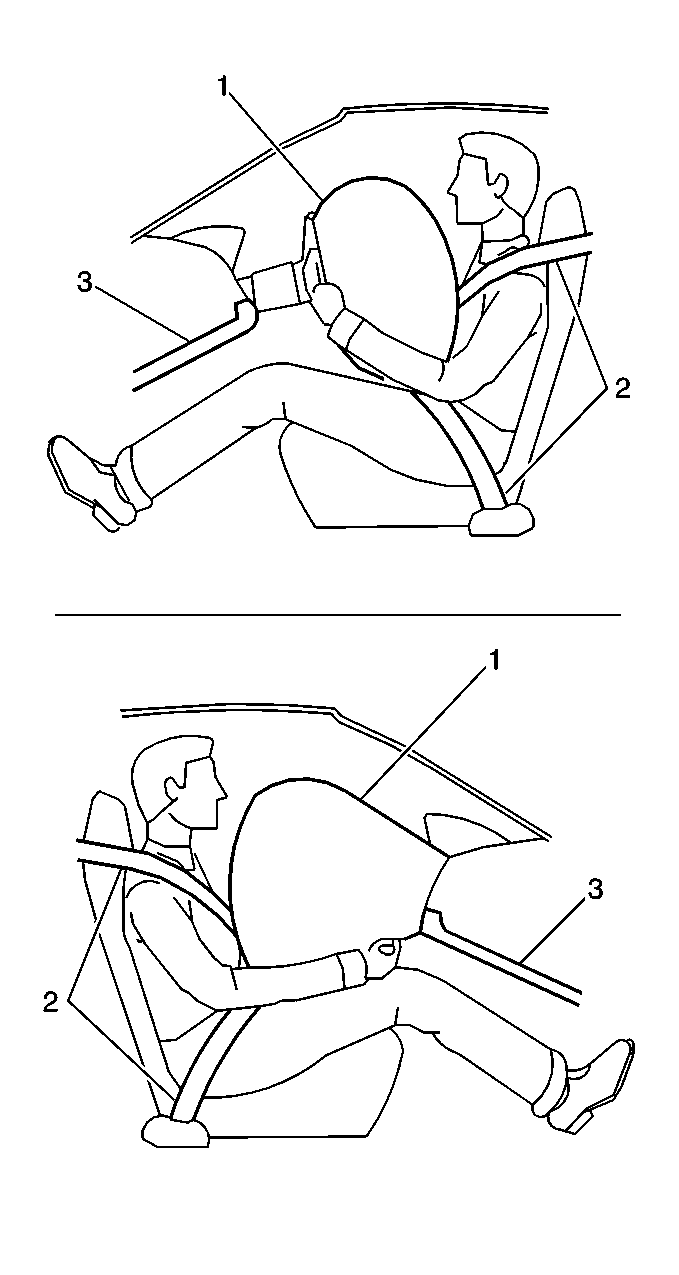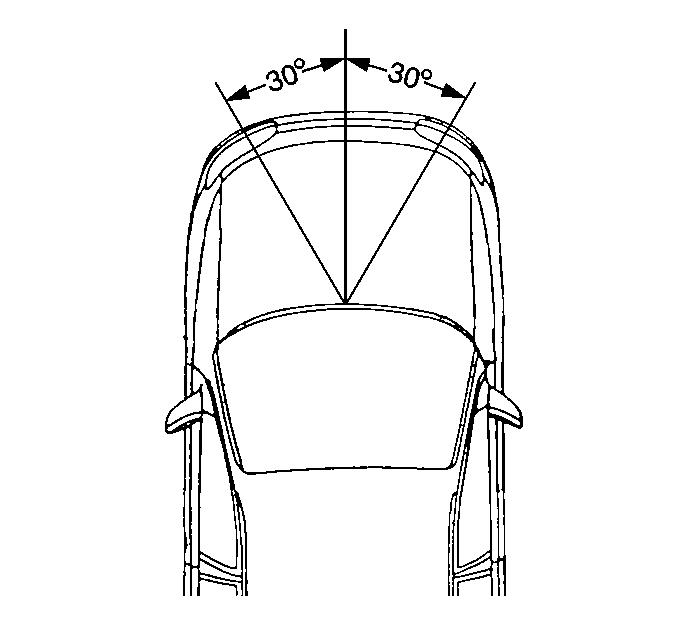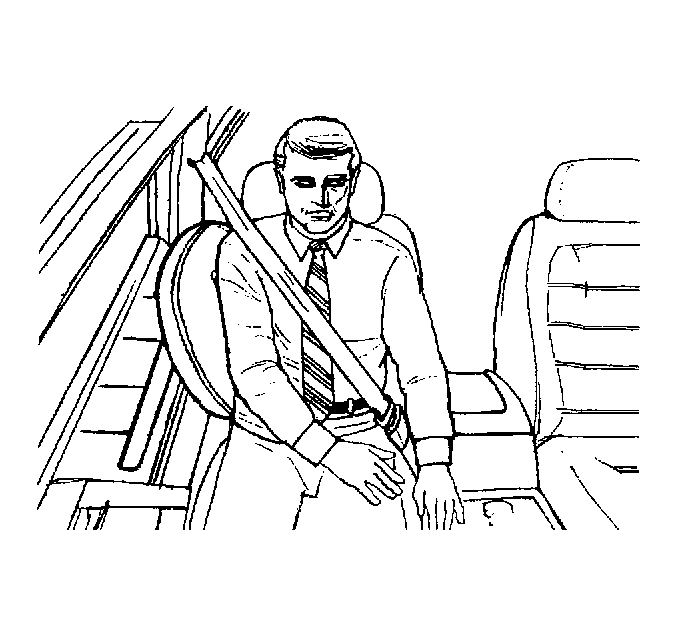Frontal Restraint Devices
The frontal supplemental inflatable restraint (SIR) system supplements the protection offered by the driver and front passenger seat belts. The frontal SIR system deploys an air bag from the center of the steering wheel and from the right side of the instrument panel.

The seat belt pretensioners remove slack from the driver and passenger front seat belts during a mild-to-severe frontal or rear impact. The frontal SIR system deploys the seat belt pretensioners with the frontal air bags in the event of a frontal collision of sufficient force.

A frontal crash of sufficient force up to 30 degrees off the longitudinal centerline of the vehicle will deploy the frontal air bags and the pretensioners. The knee bolsters absorb crash energy. The driver and passenger knee bolsters are below the instrument panel. The steering column is collapsible.
Frontal SIR System Description
The frontal SIR system consists of the following components:
- Inflatable restraint sensing and diagnostic and seat belt pretensioner module (SDM)
- Inflatable restraint steering wheel module
- Inflatable restraint steering wheel module coil
- Inflatable restraint IP module
- Driver seat belt pretensioner
- Passenger seat belt pretensioner
- The AIR BAG Warning Lamp in the Instrument Panel Cluster (IPC)
The inflatable restraint sensing and diagnostic and seat belt pretensioner module (SDM), inflatable restraint steering wheel module coil, inflatable restraint steering wheel module, inflatable restraint IP module, driver seat belt pretensioner, passenger seat belt pretensioner, and the connecting wires make up the frontal deployment loops. The function of the frontal deployment loops is to supply current through the frontal inflator modules and the pretensioners, deploying the seat belt pretensioners, in the event of a mild frontal collision, and deploying the frontal inflator modules and the pretensioners in the event of a mild-to-severe frontal collision. Deployment occurs when the SDM detects vehicle velocity changes severe enough to warrant deployment. The seat belt pretensioners fire first, removing any slack in the driver and front passenger shoulder belts.
The SDM contains a sensing device (accelerometer) that converts vehicle velocity changes to an electrical signal. The SDM compares this electrical signal to a value stored in memory. When the generated signal exceeds the stored value, the SDM performs additional signal processing and compares the generated signals to values stored in memory. When two of the generated signals exceed the stored values, the SDM will cause current to flow through the frontal inflator modules and the pretensioners, deploying the frontal inflator modules and the pretensioners.
Side Impact Restraint Devices (If equipped)

The side impact air bag system supplements the protection offered by the driver door, the front passenger door, and the vehicle structure. The side impact air bag system deploys an air bag from the side of the driver or front passenger seat. A side crash of sufficient force will deploy a side air bag.
Side Impact Air Bag System Description
The side impact air bag system consists of the following components:
- Two inflatable restraint side impact sensors (SIS) (One in each front door)
- Inflatable restraint driver seat module in the driver's seat
- Inflatable restraint passenger seat module in the front passenger's seat
- The AIR BAG Warning Lamp in the Instrument Panel Cluster (IPC)
- Inflatable restraint sensing and diagnostic and seat belt pretensioner module (SDM)
The inflatable restraint side impact sensor (SIS), the inflatable restraint driver and passenger inflator modules, and the connecting wires make up the side impact deployment loops. The function of the side impact deployment loop is to supply current through the side impact inflator module, which will cause deployment of the side impact air bag. Deployment occurs when one of the SISs detects a side impact severe enough to warrant deployment.
The SIS contains a sensing device (accelerometer) that converts acceleration into an electrical (analog) signal. This signal is converted by a microprocessor in the SIS into acceleration and velocity data. This data is used by a sensing algorithm and compared to various predetermined boundary conditions. When the acceleration value exceeds the predetermined threshold, and the velocity boundary is crossed, the SIS will cause current to flow through the inflatable restraint driver module or the inflatable restraint passenger seat module.
